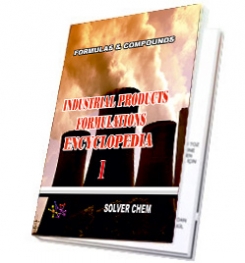CALCIUM CARBONATE
1. Product Identification
Synonyms: Carbonic acid calcium salt; calcite; aragonite; limestone
CAS No.: 471-34-1
Molecular Weight: 100.09
Chemical Formula: CaCO3
Product Codes:
2. Composition/Information on Ingredients
Ingredient CAS No Percent Hazardous
--------------------------------------- ------------ ------------ ---------
Calcium Carbonate 471-34-1 90 - 100% Yes
3. Hazards Identification
Emergency Overview
--------------------------
CAUTION! MAY CAUSE IRRITATION TO SKIN, EYES, AND RESPIRATORY TRACT. NUISANCE DUST.
SAF-T-DATA(tm) Ratings (Provided here for your convenience)
-----------------------------------------------------------------------------------------------------------
Health Rating: 1 - Slight (Life)
Flammability Rating: 1 - Slight
Reactivity Rating: 1 - Slight
Contact Rating: 1 - Slight
Lab Protective Equip: GOGGLES; LAB COAT; VENT HOOD; PROPER GLOVES
Storage Color Code: Green (General Storage)
-----------------------------------------------------------------------------------------------------------
Potential Health Effects
----------------------------------
Inhalation:
Excessive concentrations of a nuisance dust may cause nuisance condition such as coughing, sneezing, and nasal irritation.
Ingestion:
Non-toxic.
Skin Contact:
Not expected to be a health hazard from skin exposure.
Eye Contact:
No information found, but presumed to cause mechanical irritation.
Chronic Exposure:
Excessive oral doses of calcium carbonate may produce alkalosis and hypercalcemia.
Aggravation of Pre-existing Conditions:
No information found.
4. First Aid Measures
Inhalation:
Remove to fresh air. Get medical attention for any breathing difficulty.
Ingestion:
If large amounts were swallowed, give water to drink and get medical advice.
Skin Contact:
Wash exposed area with soap and water. Get medical advice if irritation develops.
Eye Contact:
Wash thoroughly with running water. Get medical advice if irritation develops.
5. Fire Fighting Measures
Fire:
Not considered to be a fire hazard.
Explosion:
Not considered to be an explosion hazard.
Fire Extinguishing Media:
Use any means suitable for extinguishing surrounding fire.
Special Information:
In the event of a fire, wear full protective clothing and NIOSH-approved self-contained breathing apparatus with full facepiece operated in the pressure demand or other positive pressure mode.
6. Accidental Release Measures
Ventilate area of leak or spill. Wear appropriate personal protective equipment as specified in Section 8. Spills: Sweep up and containerize for reclamation or disposal. Vacuuming or wet sweeping may be used to avoid dust dispersal.
7. Handling and Storage
Keep in a tightly closed container, stored in a cool, dry, ventilated area. Protect against physical damage. Containers of this material may be hazardous when empty since they retain product residues (dust, solids); observe all warnings and precautions listed for the product.
8. Exposure Controls/Personal Protection
Airborne Exposure Limits:
- OSHA Permissible Exposure Limit (PEL):
15 mg/m3 total dust, 5 mg/m3 respirable fraction for nuisance dusts.
- ACGIH Threshold Limit Value (TLV)
for Particulates (insoluble or poorly soluble) Not Otherwise Specified (PNOS):
3 mg/m3 respirable particles and 10 mg/m3 inhalable particles.
Ventilation System:
A system of local and/or general exhaust is recommended to keep employee exposures below the Airborne Exposure Limits. Local exhaust ventilation is generally preferred because it can control the emissions of the contaminant at its source, preventing dispersion of it into the general work area. Please refer to the ACGIH document, Industrial Ventilation, A Manual of Recommended Practices, most recent edition, for details.
Personal Respirators (NIOSH Approved):
If the exposure limit is exceeded and engineering controls are not feasible, a half facepiece particulate respirator (NIOSH type N95 or better filters) may be worn for up to ten times the exposure limit or the maximum use concentration specified by the appropriate regulatory agency or respirator supplier, whichever is lowest.. A full-face piece particulate respirator (NIOSH type N100 filters) may be worn up to 50 times the exposure limit, or the maximum use concentration specified by the appropriate regulatory agency, or respirator supplier, whichever is lowest. If oil particles (e.g. lubricants, cutting fluids, glycerine, etc.) are present, use a NIOSH type R or P filter. For emergencies or instances where the exposure levels are not known, use a full-facepiece positive-pressure, air-supplied respirator. WARNING: Air-purifying respirators do not protect workers in oxygen-deficient atmospheres.
Skin Protection:
Gloves and lab coat, apron or coveralls.
Eye Protection:
Use chemical safety goggles. Maintain eye wash fountain and quick-drench facilities in work area.
9. Physical and Chemical Properties
Appearance:
Fine, white powder.
Odor:
Odorless.
Solubility:
0.001 gm in 100 ml water, soluble in dilute acids.
Density:
2.7 - 2.95
pH:
No information found.
% Volatiles by volume @ 21C (70F):
0
Boiling Point:
Not applicable.
Melting Point:
825C (1517F)
Vapor Density (Air=1):
No information found.
Vapor Pressure (mm Hg):
No information found.
Evaporation Rate (BuAc=1):
No information found.
10. Stability and Reactivity
Stability:
Stable under ordinary conditions of use and storage.
Hazardous Decomposition Products:
When heated to decomposition (825C), emits calcium oxide fumes and liberates carbon dioxide.
Hazardous Polymerization:
Will not occur.
Incompatibilities:
Acids, fluorine, magnesium with hydrogen.
Conditions to Avoid:
Heat, incompatibles.
11. Toxicological Information
No LD50/LC50 information found relating to normal routes of occupational exposure.
--------Cancer Lists------------------------------------------------------
---NTP Carcinogen---
Ingredient Known Anticipated IARC Category
------------------------------------ ----- ----------- -------------
Calcium Carbonate (471-34-1) No No None
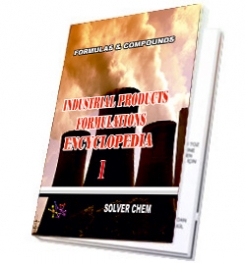
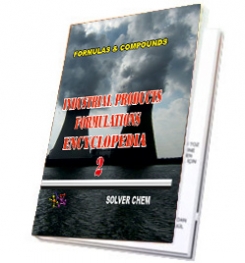
12. Ecological Information
Environmental Fate:
No information found.
Environmental Toxicity:
No information found.
13. Disposal Considerations
Whatever cannot be saved for recovery or recycling should be managed in an appropriate and approved waste disposal facility. Processing, use or contamination of this product may change the waste management options. State and local disposal regulations may differ from federal disposal regulations. Dispose of container and unused contents in accordance with federal, state and local requirements.
14. Transport Information
Not regulated.
15. Regulatory Information
--------Chemical Inventory Status - Part 1---------------------------------
Ingredient TSCA EC Japan Australia
----------------------------------------------- ---- --- ----- ---------
Calcium Carbonate (471-34-1) Yes Yes Yes Yes
--------Chemical Inventory Status - Part 2---------------------------------
--Canada--
Ingredient Korea DSL NDSL Phil.
----------------------------------------------- ----- --- ---- -----
Calcium Carbonate (471-34-1) Yes Yes No Yes
--------Federal, State & International Regulations - Part 1----------------
-SARA 302- ------SARA 313------
Ingredient RQ TPQ List Chemical Catg.
----------------------------------------- --- ----- ---- --------------
Calcium Carbonate (471-34-1) No No No No
--------Federal, State & International Regulations - Part 2----------------
-RCRA- -TSCA-
Ingredient CERCLA 261.33 8(d)
----------------------------------------- ------ ------ ------
Calcium Carbonate (471-34-1) No No No
Chemical Weapons Convention: No TSCA 12(b): No CDTA: No
SARA 311/312: Acute: Yes Chronic: No Fire: No Pressure: No
Reactivity: No (Pure / Solid)
Australian Hazchem Code: None allocated.
Poison Schedule: None allocated.
WHMIS:
This MSDS has been prepared according to the hazard criteria of the Controlled Products Regulations (CPR) and the MSDS contains all of the information required by the CPR.
16. Other Information
NFPA Ratings: Health: 0 Flammability: 0 Reactivity: 0
Label Hazard Warning:
CAUTION! MAY CAUSE IRRITATION TO SKIN, EYES, AND RESPIRATORY TRACT. NUISANCE DUST.
Label Precautions:
Avoid contact with eyes, skin and clothing.
Wash thoroughly after handling.
Avoid breathing dust.
Keep container closed.
Use with adequate ventilation.
Label First Aid:
In case of contact, immediately flush eyes or skin with plenty of water for at least 15 minutes. If irritation develops call a physician. If inhaled, remove to fresh air. Get medical attention for any breathing difficulty.
Product Use:
Laboratory Reagent.
Revision Information:
No Changes.
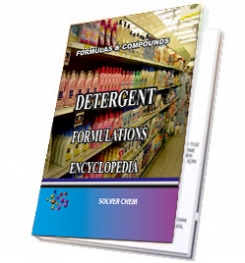
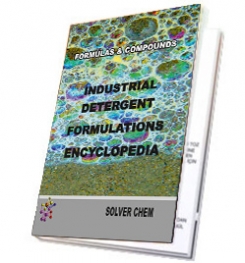
RELATED TAGS : USING OF CALCIUM CARBONATE,PROPERTIES OF CALCIUM CARBONATE,WHERE TO USE CALCIUM CARBONATE,PRODUCTION OF CALCIUM CARBONATE,MANUFACTURING OF CALCIUM CARBONATE,FORMULATION OF CALCIUM CARBONATE,HOW TO USE CALCIUM CARBONATE,CALCIUM CARBONATE MSDS,HOW TO USE CALCIUM CARBONATE,HOW TO COMPOUND OF CALCIUM CARBONATE,DEFINITION OF CALCIUM CARBONATE,INFORMATION OF CALCIUM CARBONATE.
SOLVER CHEM.

|
|

